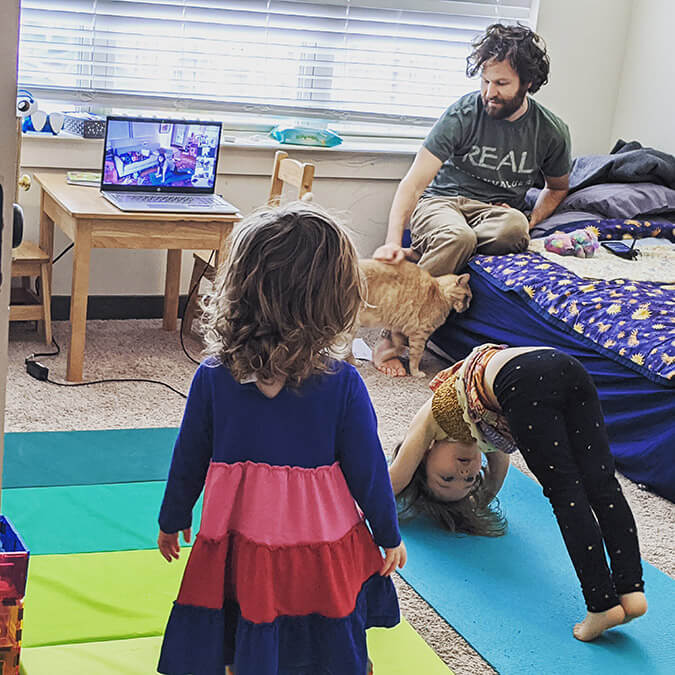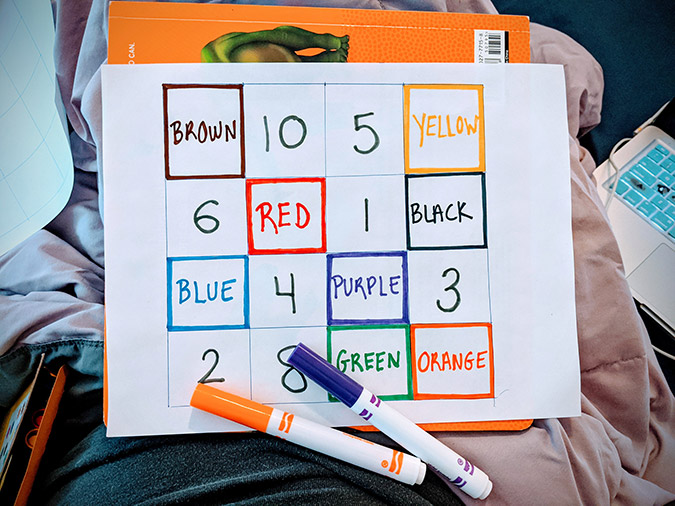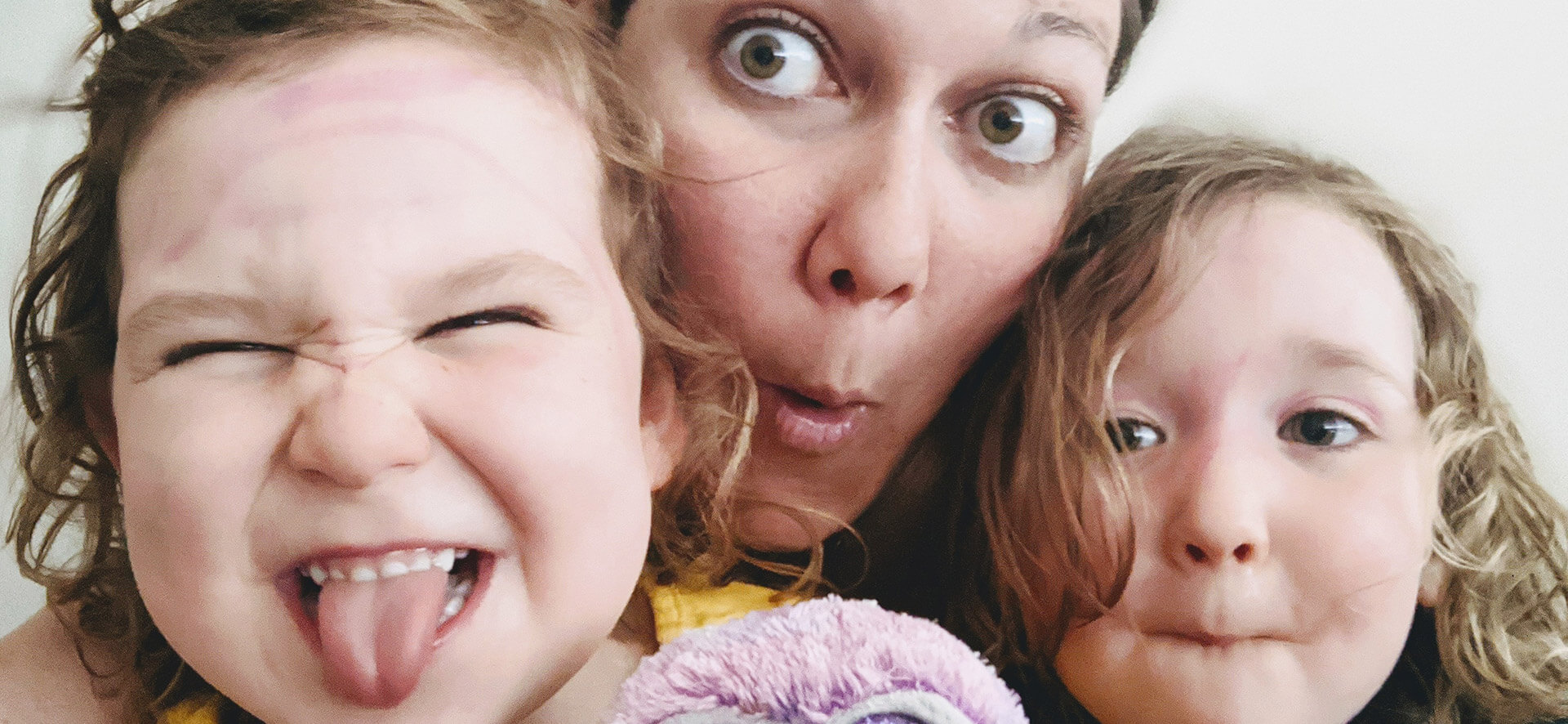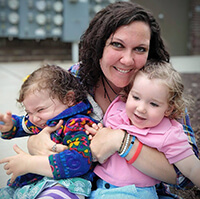Social distancing, self-isolation, quarantine. Overnight the world as we know it changed from one of free movement and interaction to one of distancing and solitude. Those of us who co-create space for children to self-direct have long touted the immense and natural learning that comes from regular day to day interactions, relationship building, and navigating the world. Now that the world is working its way towards lockdown, what does that mean for self-direction?
Just one week ago, my 4 year old and 2 year old were spending long days with their friends – 7 hours or more per day were spent playing, without much interruption. Last Thursday, they told me all about the lizards their friends found, the music offerings they had attended, the funny things their buddies had done in the mud kitchen. By Friday, they were being told that those long, uninterrupted hours spent with friends would be over for a while.
By Saturday, they were told they were quarantined with us while we waited for a test to rule out COVID-19 in one of us.
By Sunday, they learned that their forced separation from friends might last a whole lot longer than we had initially thought.
By Monday, they were climbing the walls.

I have to assume that part of their vocal revolt has been attached to their sudden loss of autonomy over who they spend their time with. In just a few days their lives changed completely and the freedom to navigate the world that we had created with the help of our “school” community has disappeared. Sick myself, I can only really listen to their protests and cries for their friends while their Dad does his best to work with them to recognize what they can control. In my own solitude, I have realized just how different self-direction can become in an instant and how central autonomy over who we interact with and when is to our way of life.
To all the folks that have never understood this philosophy of learning and have suddenly been thrust into what they imagine to be “homeschooling” I promise you, this isn’t our normal. Self-directed learners, homeschoolers, unschoolers, and Worldschoolers don’t embrace social isolation any more than the next person. In fact, our entire way of learning and looking at the world relies on engagement and exchange. You aren’t seeing validation of all your worst fears about socially isolated homeschoolers- you’re seeing a manifestation of our worst fears of a world where our kids – we – can’t exist fully.
As I pondered these dilemmas, our extended school was already kicking into action. With no stress around testing or academic progress, we are putting our brains together to keep these kids connected, cared for, and self-directing. Online offerings on everything from juggling to history have popped up in less than 24 hours time. Today, my 4 year old took yoga and beginner Spanish with a mix of humans she knows well and those she’s never met before. In her day to day life, that same 4 yr old takes some time to adjust to new facilitators and new peers- a lot of time. Online, it seems she barely notices her lack of social familiarity. Tomorrow, she will participate in a morning circle with her age mixed friends and a violin lesson with her beloved violin teacher. Will tomorrow go as well as today? I have no idea. None of us do.
I’ve always been admittedly reluctant to rely too heavily on technology for things that can happen in person. It’s not that I want to exclude folks who can’t get to in-person meetings, it’s a deep desire for human connection mixed with the anxiety of trying to hold all of the platforms in my mind. For me, online platforms are overwhelming and not nearly as streamlined as showing up with a casserole and a willingness to be with other people. As someone who has always struggled to feel like I “fit in”, relying on technology has always felt dangerously close to giving up on in person connection. Yet, as our world shuts down, I find myself feeling supremely grateful for these technology based options my children have.

Not only are we redefining what education and self-direction look like in this moment, we’re also redefining what community looks like; we’re revisiting what family and quality time look like; we’re reevaluating boundaries. As we hunker down in place, drive less, and watch to see what the next several weeks will bring, the earth is healing in our absence. Less cars, less frivolous waste, less trash thrown into the oceans. I wonder what the animals think of this human social isolation. Do they wonder where we’ve gone? Or are they just glad to have their sanctuaries back to themselves? Perhaps technology is what is going to allow us to be successful at this whole isolation experiment.
My guess is that there will be ebbs and flows in our embrace of technology based contact over the next several weeks. Eventually, we will miss the warmth in hugs from specific people, the smell of our best friend’s kitchen, and the feel of a grandparent’s hand in ours. Eventually we will burst back out into our social circles, releasing our self-directed little humans back to their collaborative mud kitchens, tea parties, and playgrounds. Our kids will inevitably bristle at the most basic of freedoms- the freedom of movement and social choices- being taken away from them and we will comfort them by counting down the days until they can return to their “normal”.
For now, we’ll bake. Maybe we’ll make some forts or read the eleventy-billion books we own. It’s suddenly possible that I’ll actually crochet something, sew something, or paint something. I might even finish the book I’ve been working on. There’s a chance my husband might find a way to carve out some time to sit, think, and be introspective- something he always craves. Perhaps our 4 yr old will finally get her fill of dance parties and our 2 yr old will get to play dress up as much as his sparkly little heart desires. While we’re at it, we might just rediscover what makes our hearts sing, instead of just following the same daily schedule, assuming contentment and happiness exist in a routine we set-up months or years ago. As we go, maybe we’ll throw it online and see who else is rediscovering their days alongside us.
Whatever the heck it is we are doing these next several weeks, a central piece of the puzzle will be examining and redefining what it means to self-direct in an isolated world. At least there is a comfort in knowing that we’re all figuring it out together and that we might just see some of you online.
If you enjoyed this article and feel called to give back to ASDE, here are ways you can support our work:
- Donate money
- Share our content with others! Click one of the buttons above to easily share on Twitter, Facebook, or email.
- Consider becoming a Contributor for Tipping Points
Tipping Points Magazine amplifies the diverse voices within the Self-Directed Education movement. The views expressed in our content belong solely to the author(s). The Alliance for Self-Directed Education disclaims responsibility for any interpretation or application of the information provided. Engage in dialogue by reaching out to the author(s) directly.






